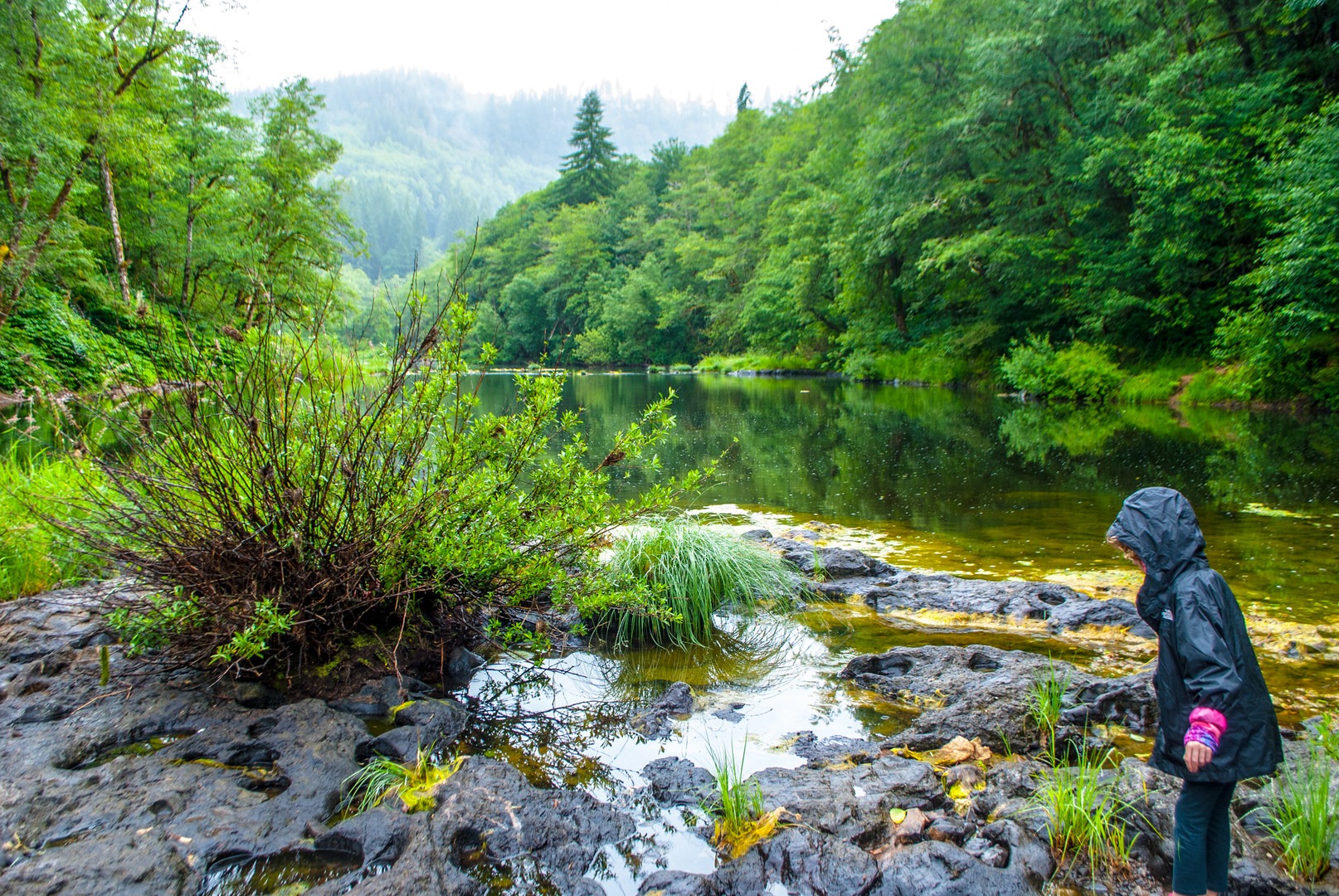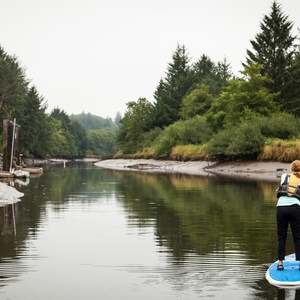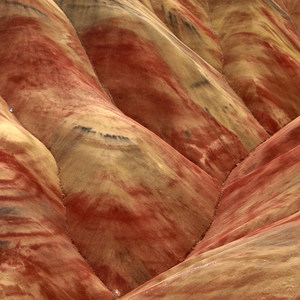You are here
Getting Started | Where To Go | Sleep In Comfort | Good Eats | Sweet Treats | What You Can Leave Behind | You’re Camping...Now What? | It’s Okay to Go Home | Final Thoughts
Getting Started
Car camping with kids is a fantastic way to break loose from the daily routine and spend quality time together as a family. The lack of structure, fresh air, and distraction-free hours can bring parents and kids together in new ways. For first-time campers though, it can be a little daunting to consider all of the necessities for a sleepover in the woods. The most important considerations are cozy sleeping quarters and plenty of good food to eat. With a warm, dry bed and a full belly, the rest is easy.
Where To Go
Securing a campground reservation in the summer can feel like searching for a needle in a haystack. Fortunately, there are some smaller first-come, first-served options available for families. Local state park and state forests will often have campgrounds that do not require advance planning. A campground with a water element such as a lake or a river will keep kids busy for hours.
Sleep In Comfort
Most tents sized according the number of people they can sleep. With small children, you afford can fudge this a bit; now that my two kids are 6 and 7, however, we are making the transition from a two-person to a three-person tent for our family of three. A tent with rain fly is crucial here in the Pacific Northwest. If we didn’t camp in the rain occasionally, we might never go camping! Also, if you’ve never set up a tent before, a practice round of setting it up in your backyard or at a park on a picnic can help you get the hang of it with less pressure on your actual trip.
Air mattresses for sleeping on are good for preventing sore backs. Warm sleeping bags or even quilts can work as covers if you haven’t made the jump to a bag. Bring pillows from home and, of course, favorite stuffed animals and bedtime stories. Maintaining routine, even in a campsite, can reassure small kids that everything is safe and okay. I find that a few glowsticks hung from the roof of the tent and passed around to little hands can ease fears of the dark. Before bedtime, a trip (or two!) to the bathroom can prevent a midnight run the outhouse or accident in the tent.
The tent and sleeping bags are usually the first things we set up at the campground. Kids seem to love helping to pull the fluffy sleeping bags out of their stuff sacks and arranging the tent. Laying the bags out early helps them loft and makes them warmer for sleeping later. A trashbag at the foot of the sleeping bags keeps any unusually dirty clothes separate from the sleeping gear and makes cleanup back at home easier.
Good Eats
Once the tent is secured, we bring out the camp chairs, cook stove, and cooler. I like to keep all the cooking items to one end of the picnic table, leaving the rest of the space for kids to climb, draw, and display their various rock and leaf collections that inevitably gather. Keeping your firewood tucked under the table helps it stay a bit drier in the event of a brief rain shower. As with the tent, practicing setting up and using your camp stove at home can make meal preparation much less stressful at the campsite.
With cooking, it’s easiest to keep meals simple at first. Breakfast can be as basic as muffins and fruit, yogurt sticks, instant oatmeal, or pre-cooked bacon. An abundance of hot cocoa and hot cider keeps kids from complaining while the rest of the meal is being brought out in the morning. Sandwiches, hot dogs, hummus and pitas, and easily packed fruit like apples, bananas, or grapes make for fast and filling lunches. An outsized quantity of granola bars acts as a stop-gap between meals. If we are doing a spur-of-the-moment camping trip, I like to grab spaghetti and a meat sauce for a tasty dinner with little mess. “Walking tacos” are another family favorite for us: snack-sized bags of Frito chips opened to hold a couple of spoonfuls of taco meat, cheese, and other toppings. The kids can hold them in their hands, and eat with a spoon as they meander around the campsite. The lack of dishes to clean up afterwards is a definite plus!
It’s a good idea to return your cooler and any uneaten food to your car in order to minimize animal access. Bear boxes should be utilized if they are present. Preventing rodents and other creatures from eating your food keeps your family fed and wild animals wild. It may seem cute to toss chips to the chipmunks and peanuts to the bluejays, but feeding them can make them sick or overly reliant on people for food that doesn’t provide the nutrients they actually need.
Sweet Treats
No camping trip would be complete without s’mores. Graham crackers sandwiching melted chocolate and gooey marshmallows complete most nights around the campfire. A fun alternative to the sandwich (and inherent mess), is the s’more cone. We take ice cream cones and load them with mini marshmallows and chocolate chips, with sometimes the occasional berry or dash of sprinkles. Wrapped in foil and set on the campfire grate for a few minutes, they melt into a delicious holdable treat with endless possible flavor combinations.
What You Can Leave Behind
When we first started camping as a family, I was a bit of an over-packer. I’d bring extra changes of clothes for the extra change of clothes, multiple pairs of shoes for each kid “just in case,” a bookcase worth of reading material, board games, anything I could think of to keep them occupied. As we’ve done more trips, I’ve come to realize that it is less important to have the kids in clean clothes every single day and more important to let them fully experience the nature around them. Dirt, mud, and pine needles are all part of the experience. Now I bring one spare set of clothes and a pair of sandals for wading in any water nearby. We’ll be doing laundry at home regardless. Bringing less to begin with means less work on the return. I find that a good first aid kit, bug spray, sunscreen, and a couple towels are the important things. A warm sweatshirt and hat for the early mornings is useful for the whole family. Keeping the kids warm as they wait for their first cup of cocoa and grownups fumble about in search of coffee prevents a lot of grouching. Leaving your electronic devices at home is also something I recommend, even for parents. The distraction-free experience may be tough to adjust to at initially, but it is well worth the discomfort. I've found that I come to crave that freedom. And the kids don't even miss these devices anymore...they're too busy hunting for salamanders or building fairy houses out of pinecones.
You’re Camping...Now What?
At the pay station for most campgrounds you'll find a map of the facility in addition to a list of campground rules. Often nature trails will be detailed here as well. After dinner, when the kids are feeling restless with dessert, a short stroll on the trails or around the campground together can help settle little ones and get them ready for bed. Camp hosts will often have local knowledge and might be able to direct you to nearby day hikes for the next day. Also, a bit of campsite boredom is good for kids who are over-stimulated by screens and heavily scheduled routines. The average American kid spends 3 hours a day in front of some sort of electronic device. The wilds of camping offers a great reprieve from the digital onslaught. Giving your kids a chance to explore allows them to create their own games and entertainment. More and more research shows the benefits of unstructured outdoor play for kids.
It’s Okay to Go Home
Sometimes the weather just doesn’t cooperate in the Pacific Northwest. Maybe showers move in and hang for an entire day or a cold front refuses to break. If you’ve planned on staying for several nights, but everything is soaked and the kids are complaining...there’s no need to just stick it out on principle. The campground will be there for other trips, and the point is to make the experience as enjoyable as possible for the whole family. Packing up in the rain is never fun, and there’s no good way to keep everything dry in the process. Once you arrive back home, it’s important to dry out your tent and any gear that got soaked. Wet tents packed up and left in the garage will mildew and make your next outing far less pleasant, if not downright unhealthy. Proper gear maintenance will assure that your gear lasts for years. Hanging your tent outside, along with sleeping bags, can give it the airing out it needs. If you are limited for space a shower rod in a bathroom works equally well; I flip on the bathroom fan to help with the additional moisture.
Final Thoughts
The best way to have an enjoyable trip is to go slow and small in the beginning. Allowing plenty of time to arrive and set up camp keeps the experience low stress. There is no schedule that has to be met while camping. Like most of parenting, the more relaxed the parents are, the calmer the kids. Finding ways to prepare ahead of time (like pre-cooking meals or testing gear setup) can reduce the pressure and make the experience more enjoyable. There is no one "right way" to camp, and each family can find their own preferred setup. One- or two-night adventures in the beginning help build confidence for that epic week-long road trip to a national park or your first family backpacking excursion later!







Comments
Sign In and share them.